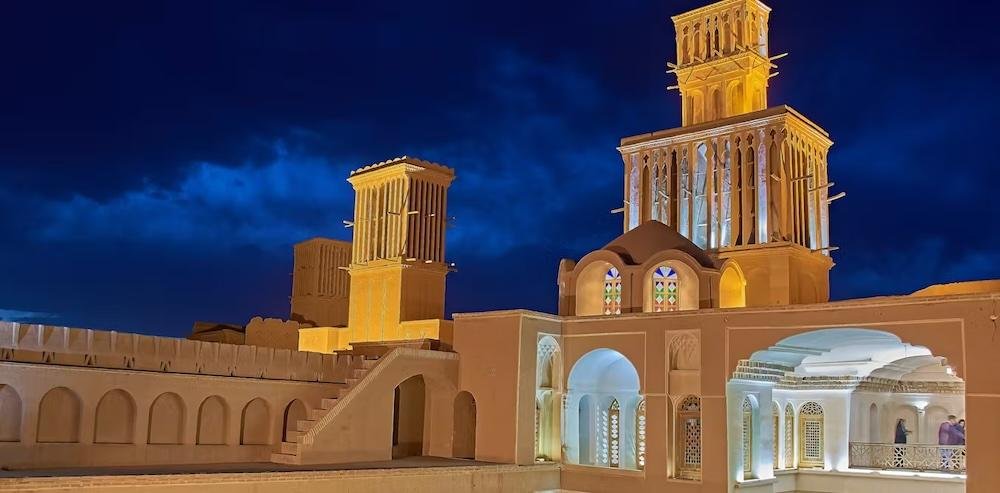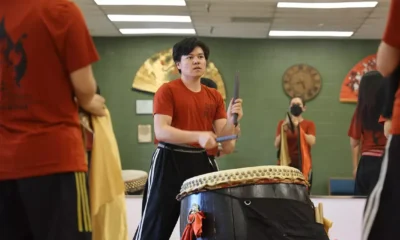Business
5 Timeless Secrets from Ancient Civilizations for Thriving in Blazing Heat That Modern Builders Overlook

Sustainable architecture is gaining traction as cities face rising temperatures and increased frequency of heat waves. The events in Houston during July 2024, following Hurricane Beryl, highlighted the vulnerabilities of modern buildings, which often rely heavily on electricity and air conditioning.
Throughout history, civilizations have developed ingenious methods to keep buildings cool in scorching climates. As an architectural designer focused on urban resilience, I’ve explored various ancient techniques that can inform contemporary practices.
As global temperatures climb, extreme heat events are anticipated to become more prevalent. This necessitates a re-examination of design principles rooted in history. Among the earliest civilizations, the Sumerians, who thrived in the arid regions of present-day southern Iraq around 6,000 years ago, implemented simple yet effective strategies for thermal regulation.
By constructing thick walls and small windows, Sumerians effectively minimized heat gain. Their use of materials like adobe allowed for heat absorption during the day and gradual release at night. The design of closely built structures also played a role in mitigating solar exposure. Courtyards facilitated ventilation, while narrow streets provided shade, enhancing pedestrian comfort.
In ancient Egypt, structures were designed to combat heat effectively. Palaces built from stone incorporated shaded courtyards, while residential buildings utilized mud bricks. Egyptians creatively adapted their living spaces by sleeping on rooftop terraces to escape nighttime heat. The mulqaf, a pioneering architectural feature with high openings for wind capture, further exemplified their innovation. This design promoted airflow and improved cooling without relying on modern air conditioning.
Similar resourcefulness emerged among the Puebloans of the Southwestern United States. Their use of shared walls, small windows, and insulating materials reflected a thoughtful approach to climate challenges. Enhancing their designs, the Puebloans strategically oriented their communities along south-facing cliffs. This positioning maximized shade in the summer while allowing sunlight to warm structures during winter.
During the eighth century, Muslim caliphates also showcased effective water management in arid regions. They designed buildings with rainwater harvesting systems, channeling runoff into cisterns for irrigation. This practice emphasized the value of efficient water use, a lesson still relevant today. Cities like Mendoza, Argentina, continue to apply such methods to maintain green urban spaces.
Rainwater collection was further exemplified in ancient Mesoamerican cultures. The Mayans and the inhabitants of Xochicalco constructed aqueducts and cisterns to capture stormwater, ensuring water availability during dry months. Current projects in various countries are reviving these techniques to bolster urban resilience and water quality.
Modern architecture has begun to embrace these ancestral strategies. Designing buildings with optimal solar orientation, implementing rainwater harvesting, and creating shaded outdoor spaces represent steps toward resilience in increasing temperatures. Adapting ancient wisdom to contemporary needs can significantly enhance livability in harsh climates.
While retrofitting existing urban landscapes poses challenges, the incorporation of these time-tested principles can enable cities to thrive in the face of climate change, ultimately reducing dependency on energy-intensive cooling systems.












![Members of the Arizona House of Representatives vote during a third reading of nearly three dozen bills at the Arizona State Capitol on March 4, 2025. [Monica D. Spencer]](https://arizonanews.org/wp-content/uploads/2025/06/SR-347-Secures-53M-in-Third-State-Budget-Draft-Awaiting-80x80.jpg)





